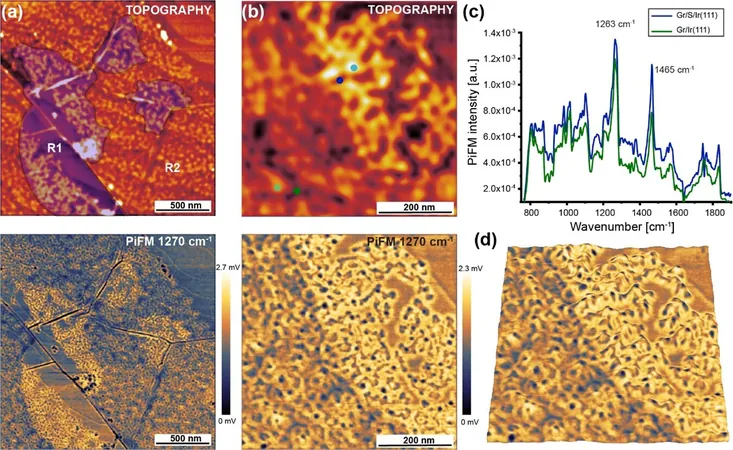
Unlocking Atomic Secrets: Groundbreaking Advances in 2D Material Visualization
2025-06-04
Author: John Tan
Revolutionary Techniques Unveiled by Croatian Researchers
In an exciting breakthrough, researchers at the Institute of Physics in Zagreb, Croatia, alongside international collaborators, have unveiled innovative methods for visualizing atomic-scale transformations in advanced materials. This is crucial in the quest to understand and manipulate the properties of ultra-thin materials.
The Challenge of Detecting Atomic Changes
How do you detect minute changes occurring within materials just one atom thick? This daunting challenge was taken on by a dedicated team from Croatia, who defied conventional beliefs by employing advanced atomic force microscopy (AFM)—a technique often deemed inadequate for such precise tasks.
Discovering Intercalation: A Game-Changer for 2D Materials
Their research, detailed in The Journal of Physical Chemistry Letters, demonstrates how AFM can effectively visualize intercalation—the process of inserting atoms between material layers—within ultra-thin substances like graphene and molybdenum disulfide (MoS2). This discovery holds significant implications for tailoring 2D materials for applications ranging from flexible electronics to cutting-edge quantum technologies.
Accessible Atomic Insight: A New Era for Material Science
Dr. Iva Šrut Rakić, the lead researcher, stated, "We proved that atomically resolved techniques aren't the only means to detect atomic-level phenomena. With the right strategy, even AFM can pinpoint exactly where and how changes occur in materials." This revelation opens the door for wider applications of AFM in material Science.
Transforming Material Properties with Intercalation
Intercalation offers a powerful avenue for modifying the electronic, optical, and mechanical properties of materials. Traditionally, techniques such as scanning tunneling microscopy or photoemission enabled this detection, but their complexity and expense limited their utility.
Innovative AFM Techniques Lead the Way
Using AFM in advanced modes like Kelvin probe force microscopy and photoinduced force microscopy, the team was able to detect shifts in surface potential, stiffness, adhesion, and even optical responses. This allowed them to visualize where sulfur atoms intercalated within MoS2 and graphene, mapping subtle changes previously invisible to conventional AFM.
Real-World Applications of Advanced Measurements
Remarkably, this was achieved with samples exposed to air, bypassing the need for an ultra-high vacuum environment. Karmen Kapustić, co-first author of the paper, noted, "Our approach is more accessible and versatile, applicable to real-world materials rather than just pristine lab-grown samples."
A Bright Future for Nanomaterials
As global demand surges for next-generation nanomaterials that are thinner, lighter, and more energy-efficient, mastering atomic-level control of their behavior is vital. Intercalation stands out as a promising method to achieve this—but reliable detection and comprehension are crucial.
Bringing Atomic-Level Insights to Reality
This pioneering research demonstrates that ultra-specialized tools aren't mandatory for gaining atomic-level insights. By employing meticulous measurements and clever analyses, broader-scale techniques like AFM can unveil concealed processes in 2D materials. Co-author Cosme G. Ayani enthused, "We're bringing atomic-scale insight to real-world samples, and that's what makes this truly exciting!"



 Brasil (PT)
Brasil (PT)
 Canada (EN)
Canada (EN)
 Chile (ES)
Chile (ES)
 Česko (CS)
Česko (CS)
 대한민국 (KO)
대한민국 (KO)
 España (ES)
España (ES)
 France (FR)
France (FR)
 Hong Kong (EN)
Hong Kong (EN)
 Italia (IT)
Italia (IT)
 日本 (JA)
日本 (JA)
 Magyarország (HU)
Magyarország (HU)
 Norge (NO)
Norge (NO)
 Polska (PL)
Polska (PL)
 Schweiz (DE)
Schweiz (DE)
 Singapore (EN)
Singapore (EN)
 Sverige (SV)
Sverige (SV)
 Suomi (FI)
Suomi (FI)
 Türkiye (TR)
Türkiye (TR)
 الإمارات العربية المتحدة (AR)
الإمارات العربية المتحدة (AR)